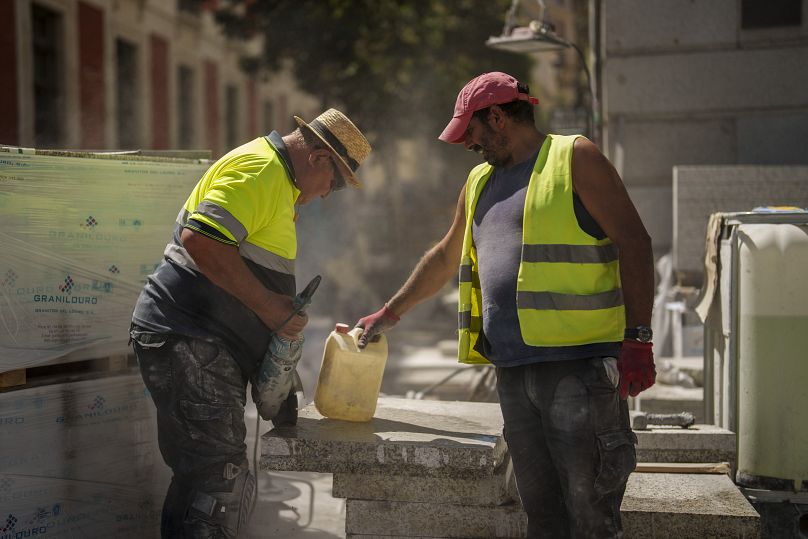Siestas and late nights: How heatwaves could revolutionise the way we work

To avoid the brunt of the heat, people might take more breaks, work shorter shifts, or embrace an overnight shift.
This past month is set to be the hottest July on record with much of Southern Europe having struggled to cope with scorching temperatures which reached well over 40C.
It’s hard to think that, in the face of such extreme heat, we can continue to go on with business as usual, with construction workers heading out to spend hours under the scorching sun and employees being forced into buildings without air conditioning for 8 to 9 hours a day.
According to a 2019 reportby the International Labor Organization (ILO) on the impact of heat stress on labour productivity and decent work, temperatures over 39C can seriously harm and kill workers.
Last summer, an estimated 61,000 people died in Europe because of the extreme heat, according to a recent report.
“Heatwaves cause irritability and people work at a slower pace and struggle with commuting,” Julie Davies, a professor at UCL Global Business School for Health, told Euronews.
“They disrupt workers’ concentration levels, cause fatigue, and can be highly dangerous for workers who are operating in safety-critical roles. Businesses might have to close during the hottest hours and lose customers which can exacerbate in-work poverty and business closures and harm economies.”
Davies thinks that “we need some urgent changes” in our employment law, “particularly for the vulnerable people who have to go work outside, who have to commute, or are in buildings where there is no air conditioning.”
“Employers already have a duty of care in terms of flexible working and talking to their employers about what works and what can kill them — but what we need is a legal requirement for maximum temperatures in the workplace,” Davies added.

The ‘siesta’ moves up north
While the law around working in the heat hasn’t yet caught up with increasingly higher temperatures in many countries across Europe — which lack regulations about maximum temperatures in the workplace — workers around the continent are already making adjustments to safely handle the heat.
German news website RND reported earlier this month that public health officials in the country were recommending workers take a midday break, something like the Spanish “siesta”, to avoid the hottest times of the day.
“We should take the approach to work common in southern countries when it comes to heat: getting up early, being productive in the morning and taking a siesta around midday is a concept we should adopt in the summer months,” Johannes Nießen, the head of the Federal Association of Physicians of German Public Health Departments (BVÖGD), told the news website.
Changing working hours
People in hot and humid countries are already changing their work schedules to avoid exerting themselves in the middle of the day, the time when usually the risk to our well-being increases.
“A colleague of mine in India told me that school kids in some parts of the country now go to school at 5 in the morning and they come back at 9 in the evening to avoid the heat,” Davies said. “You almost become nocturnal.”
A heat-friendly work pattern might include more work late at night, and more breaks like the Spanish siesta.
A study published in 2021 in Nature Communications found that around 30% of the work hours we’re currently losing due to the heat could be recovered if we changed our schedule to embrace the cooler hours of the day.
“Solutions include national employment legislation to protect workers and to educate line managers about the risks of hyperthermia and their legal responsibilities,” Davies said.
“We need to invest in infrastructure, climate data analysis and communications, workplace cultures, skills development, and technological improvements to improve how we prevent heat stress,” she continued.
“Employers and employees should work together to create space for regular dialogue. Employers need to agree to fair and reasonable adjustments to working hours and other occupational safety, health, and well-being measures when there is excessive heat.”

